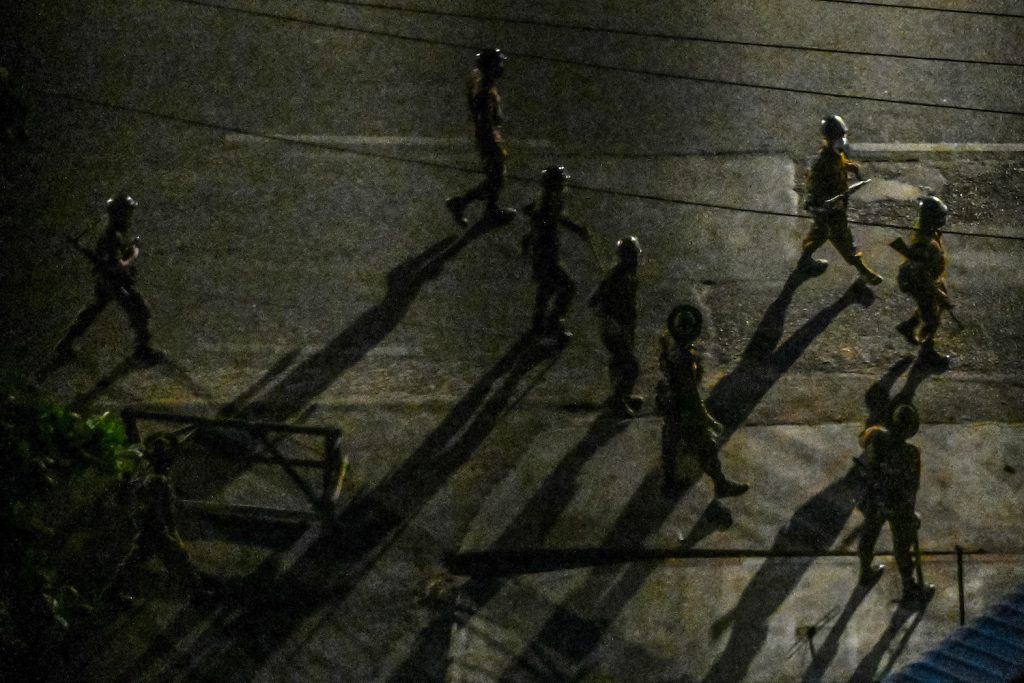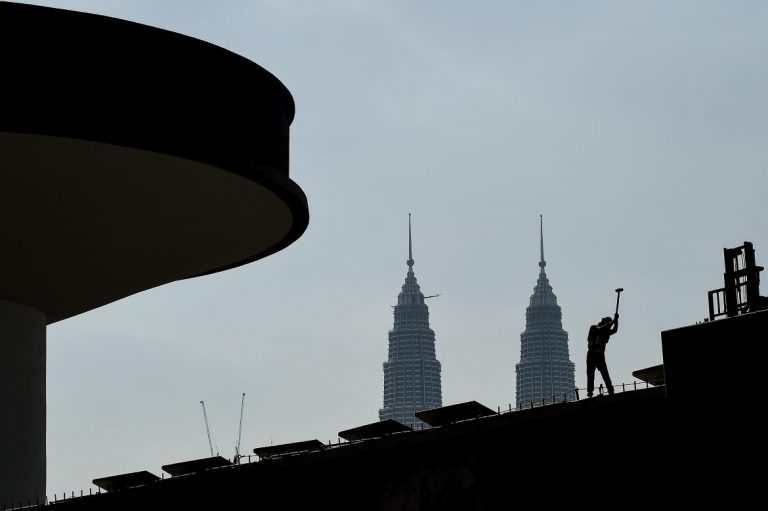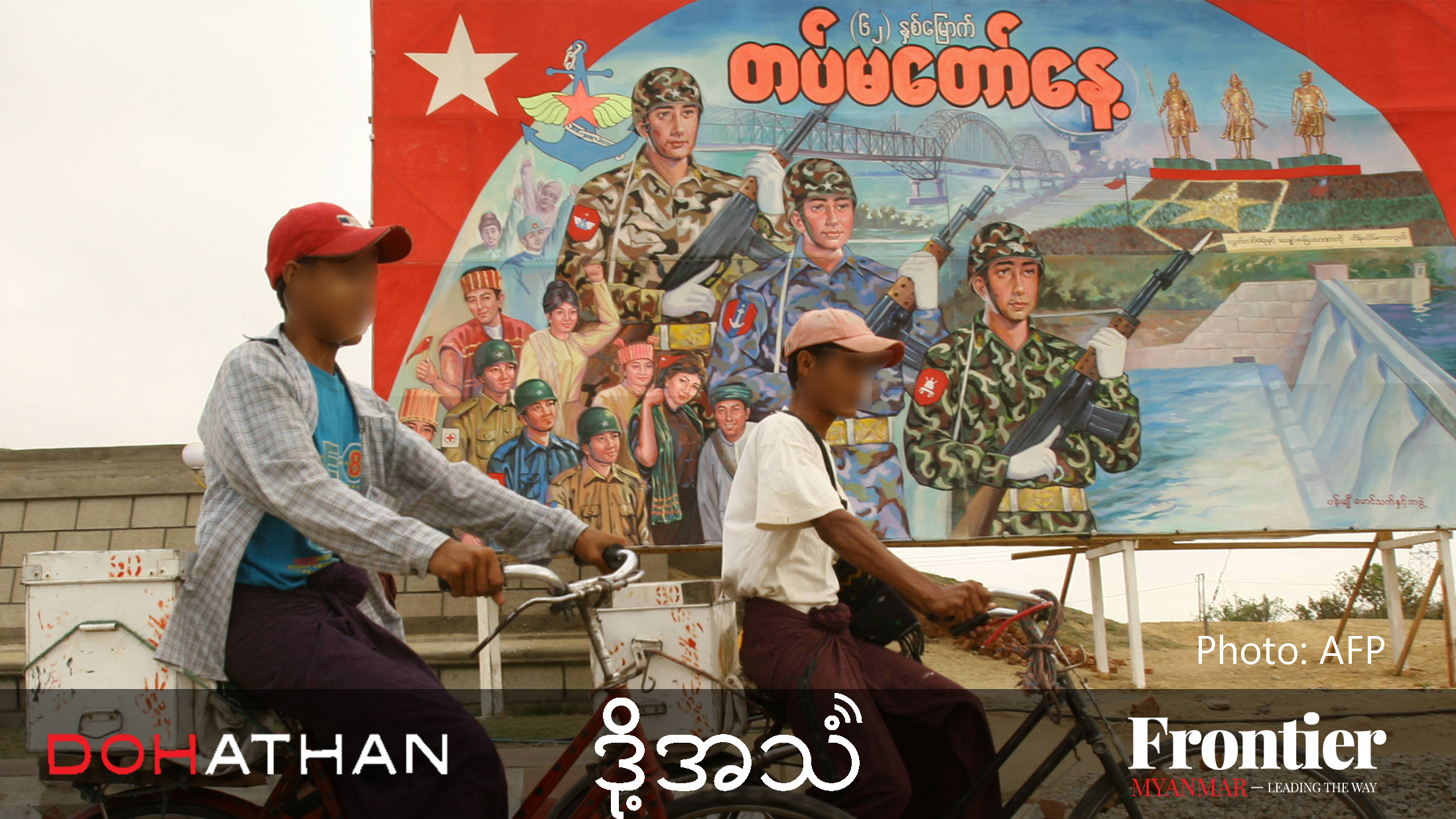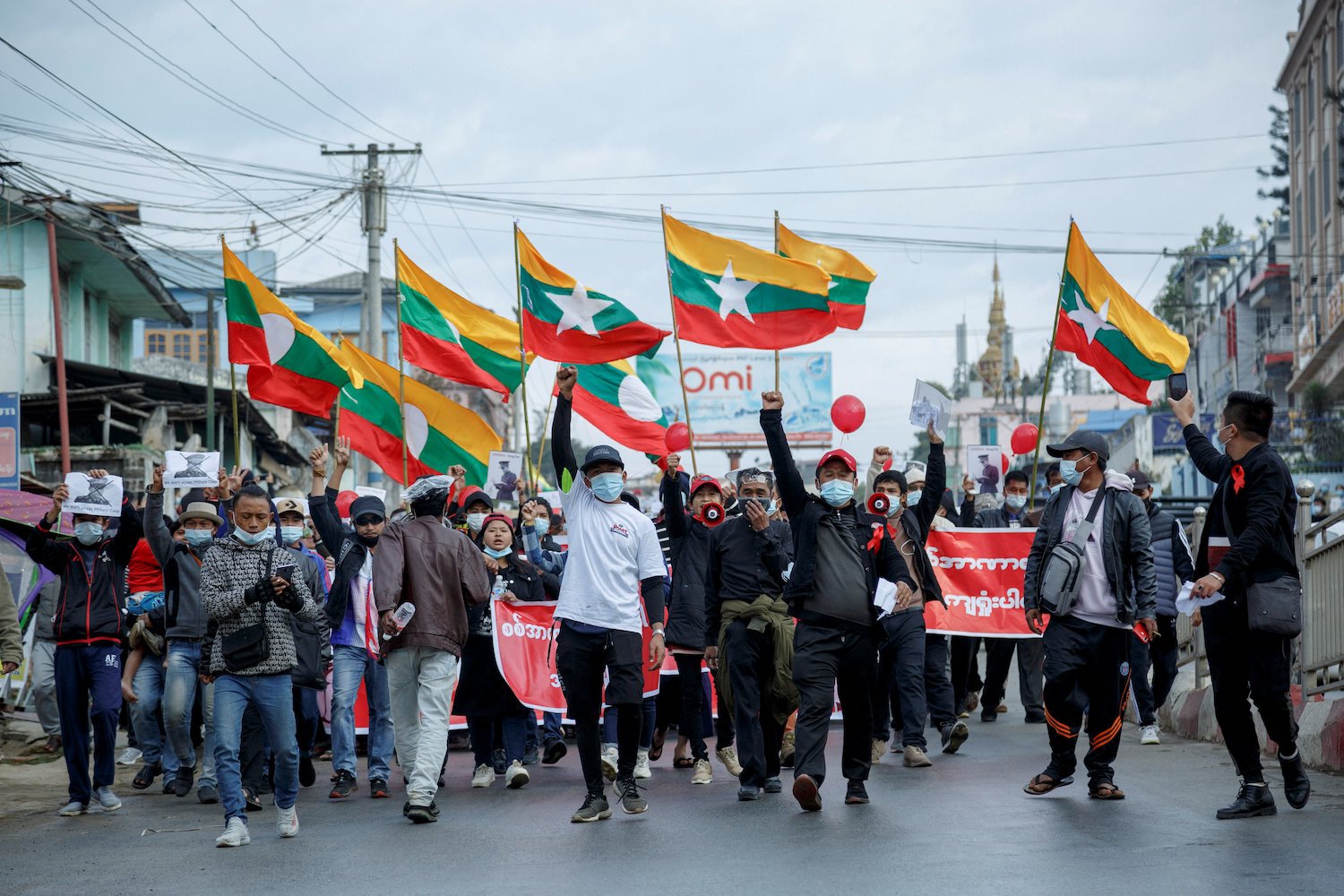When the killing of defiant protesters began in Myanmar earlier this year, it prompted an evacuee from Beijing after Tiananmen to recall a sign in a Hong Kong jewellery shop 32 years ago.
By GEOFFREY GODDARD | FRONTIER
After the Tatmadaw began using lethal force against citizens outraged at its decision to seize power and crush the hopes for a better future of most of the population, I often thought of the poignant message I saw in the window of a Hong Kong’s jewellery shop more than 30 years ago.
I had arrived in Hong Kong on a Qantas evacuation flight from Beijing a few days after the Tiananmen massacre. It was a deeply moving time to be among the Hong Kong people and sense their grief, incomprehension and solidarity over the violence unleashed by the People’s Liberation Army in the Chinese capital. The grief was manifested in the poignant hand-written note on a white card in the front window of the jewellery shop in the expensive Central district. “We breathe and touch democracy, and now vanish,” it said. It’s a sentiment that I am sure would resonate powerfully with many Hong Kong residents today.
I arrived in Myanmar to work as a journalist in 2001 and stayed until a few years ago, though in some ways I never left. There were dark times in the early years, when I experienced at close hand the ruthless and often vindictive persecution at which the junta excelled, but which never succeeded in crushing the sweet, resilient Burmese.
In September 2007, I stood on the side of Sule Pagoda Road and applauded the long column of monks marching, burgundy-robed, to show contempt at the junta’s incoherent economic management that was exacerbating the hardship of the people.
A year later, Cyclone Nargis roared out of the Bay of Bengal and smashed into the Ayeyarwady Delta, killing close to 140,000 people, devastating hundreds of villages and leaving millions of survivors in misery. Their plight inspired moving acts of generosity from ordinary Burmese who spontaneously went to the aid of their compatriots while a paranoid junta initially blocked plans for a massive international relief effort.
The military regime though was more focused on holding a referendum to approve a constitution it had drafted that aimed at cementing its dominance of national politics, a plan that failed spectacularly in the 2015 and 2020 elections. And here we are: back to the future.
But first came the 2010 election, which the National League for Democracy boycotted, ensuring a dubious victory for the Union Solidarity and Development Party.
After a slow start when it took office the following year, it embarked on a series of reforms that slowly, slowly gained it the respect of many members of a sceptical public. As Myanmar continued its democratic experiment, and the people became more confident that it might succeed, the mood of the nation brightened. Daw Aung San Suu Kyi and the NLD returned to the formal political arena, winning dozens of seats in a by-election in 2012. Foreign investment began to pour in, business boomed, and the economy and the arts benefited from an influx of repatriates who had returned home to contribute to the development of their country.
The people’s confidence in the ability of the democratic experience to deliver reached a peak amid the exhilaration of the NLD’s election victory in 2015. The dreams for a better future flourished. The country was on track to recover from more than 50 years of tyranny and economic mismanagement. For expats who had lived through the dark times of the junta, the optimism in the faces of their Burmese friends and associates was wonderful to see. But now vanish.
In the aftermath of the coup, we grieve. We grieve for the lost hopes and dreams of the people, for the 10 years of progress towards building a democracy, for the people lifted out of poverty and doomed to return to it, for a society traumatised by a grotesque and disproportionate use of force.
When the protests started on the streets of Yangon and elsewhere after the coup, many commented on the festive atmosphere, the size of the crowds, the eye-catching signs, the creative slogans, the optimism of the protesters.
Similar descriptions could be used for Beijing during that tumultuous spring of 1989 when protests started after the death of a member of the Politburo, Hu Yaobang, who was widely respected because he was a reformer and not corrupt.
I had arrived in Beijing in December 1988 to work in the English department at what was then called Radio Beijing, on an exchange programme with Radio Australia in Melbourne, which I had joined in 1986.
When the protests started after Hu Yaobang died there was little attempt to stop them. I saw 50 policemen armed with truncheons trying to stop several thousand chanting students marching from Peking University to Tiananmen Square. The students pushed the police out of the way.
The protests grew bigger and bigger and became one of the biggest challenges to the Chinese Communist Party since Liberation in 1949. As the crowds swelled, so did the sense of a political power vacuum at the highest levels. Tensions rose when units of the PLA were deployed to disperse protesters but were instead surrounded by the people and sent packing. The people could not understand why the PLA had been ordered against them because they had been indoctrinated all their lives to believe that “the People’s Army loves the people”.
Then, in the early hours of June 4 came the tanks that snuffed the life out of the protest movement, and out of hundreds and perhaps thousands of protesters.
On the morning of June 6, I decided to take a ride on my bicycle to see how close I could get to Tiananmen Square. I rode due south from the Friendship Hotel where I lived in the northern suburbs to an area known as Muxidi, where I took a left turn into Fuxingmen Street and headed towards the square. There was a tank parked across Fuxingmen Bridge a few hundred metres in front of me so I prudently decided to take a detour.
On a side road, I stopped near a crowd that was monitoring a sand-bagged PLA emplacement closer to Fuxingmen Street. A man in his 40s emerged from the crowd and approached me. He was visibly angry.
He pointed at the PLA soldiers down the road and said something that astounded me, as someone with some knowledge of Chinese history, including the obscenity of the Rape of Nanjing by the Japanese Imperial Army in 1937.
“Worse than the Japanese,” he said. “Kill their own people.”
Geoffrey Goddard is an Australian who became a journalist more than 50 enriching years ago and learned early in his career that he needed to live close to Southeast Asian native varieties of mango and the vivid, fresh green of recently planted rice.







